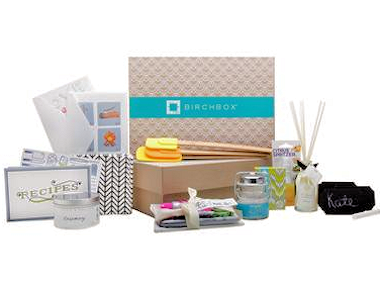Why the Brilliance of Birchbox Is Also Its Biggest Challenge
Last week, beauty-samples-in-a-box company Birchbox announced that it now has more than 400,000 subscribers, each of whom pays either $10 or $20 a month for a women’s or men’s box, respectively.

Birchbox co-founders and co-CEOs Katia Beauchamp and Hayley Barna
That’s a nice-sized business for a three-year-old company with annualized revenue of around $50 million — at a minimum, depending on how many of those subscribers get the men’s box. The company also said that a quarter of its revenue now comes from its full-price e-commerce store, so tack on some more.
The reason why Birchbox’s sample-box subscription model can make a lot of sense for beauty brands is clear: They are paying to create product samples they would anyway, but are putting them in the hands of customers who are paying to be acquired. The brands are reaching out to people who have explicitly asked to receive samples — opting in, if you will — rather than doling out samples to people who may or may not be interested in them in a fly-by manner at, say, a mall.
Yet, as Birchbox becomes more popular in the beauty category and begins branching out into others such as home, it may encounter new barriers to growth.
If the company continues to scale up its subscriber numbers within beauty, there’s a point when brands don’t want to produce any more samples, because the trade-off isn’t worth the money.
On the other hand, if Birchbox instead focuses on expanding into new categories such as men and home, as it has started to, it’s dealing with categories where the sample model isn’t as popular or doesn’t exist at all.
Birchbox’s men’s boxes, for example, contain some full-sized products, such as a polo shirt or a tie, at least in part because sample-sized products aren’t as common among men’s brands. And Birchboxes that contain home goods — which have been offered as one-off tests but not as part of a subscription — also contain many full-price items.
So, if a home decor brand or men’s retailer is going to offer a full-priced product for free, retailers are going to need to feel confident that a good number of box recipients are going on to become their customers.
Birchbox is aware of this conundrum, co-CEO Katia Beauchamp said. Within the beauty packages, it’s trying to solve for it by personalizing the boxes, so one brand isn’t creating hundreds of thousands of samples.
In non-beauty categories, Birchbox is positioning the full-priced products within the boxes as samples in their own right; if a recipient likes the full-priced product they discovered in the box, they can go buy other items from that brand in Birchbox’s full-priced online shop. But this approach means that men’s and home decor and lifestyle brands are taking a bit more of a leap of faith.
Either way, Birchbox has a strong foundation on which to build, but it’s just not yet clear what heights it can reach.










